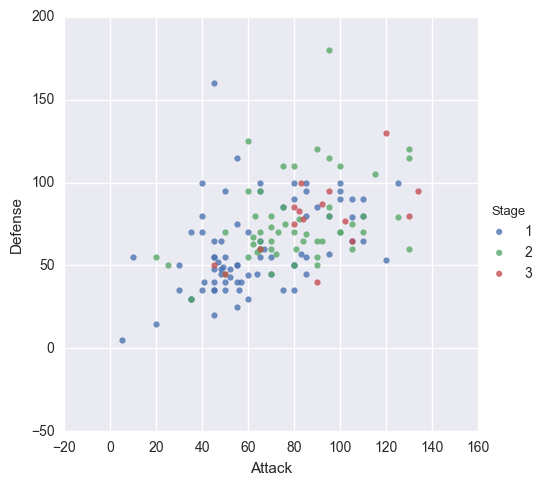

- #SEABORN SCATTER PLOT WITH SIZE COLOR INSTALL#
- #SEABORN SCATTER PLOT WITH SIZE COLOR CODE#
- #SEABORN SCATTER PLOT WITH SIZE COLOR PLUS#
hue: 3rd variable that can be used to group multiple categories and show dependency between them in terms of different colors of the data points.x, y: labels of the plot variables that specify positions on the x and y axes (in our example, these are the names of df columns “Attack” and “Defence”).Here’s some more about parameters of sns.relplot(): Seaborn can create this plot with the scatterplot() method or with relplot() - if you need additional dimensions.
#SEABORN SCATTER PLOT WITH SIZE COLOR CODE#
All the code snippets below should be placed inside one cell in your Jupyter Notebook. We’ll create a Seaborn scatter plot in several steps. Here are the first 5 lines of the edited data set:

Grouped = df.groupby(df).count()ĭf = df.isin(grouped.sort_values(by='Legendary').tail(7).index.values)] Since there are too many Pokemon types, we’ll find 7 most common ones (which are Rock, Fire, Psychic, Bug, Grass, Normal, and Water) and select pieces of data that correspond to those types:
#SEABORN SCATTER PLOT WITH SIZE COLOR PLUS#
The type will determine data points’ colors and the total score their size.įor our plot, we’ll need a data set with 3 numeric columns (2 for plotting in 2 dimensions plus 1 for point sizes) and 1 categorical column to create a “hue semantic” - to paint data points in different colors depending on Pokemon types.įor plotting, we’ll use the Pokemon dataset, which you can download on Kaggle ( Pokemon.csv). We’ll create a Seaborn scatterplot showing the properties of Pokemons depending on their types and total scores. You’ll need the last line ( %matplotlib notebook) to display plots in input cells. In the first line of the notebook, import all the necessary libraries: This will automatically open the Jupyter home page at Click on the “New” button in the top right corner, select the Python version installed on your machine, and a notebook will open in a new browser window. “sns-scatterplot”) and open Jupyter Notebook by typing this command in your terminal (don’t forget to change the path):Ĭd C:\Users\Shark\Documents\code\sns-scatterplot
#SEABORN SCATTER PLOT WITH SIZE COLOR INSTALL#
Pip install numpy scipy matplotlib ipython jupyter pandas sympy nose seabornĬreate a folder that will contain your notebook (e.g. To get other tools, you’ll need to install recommended Scientific Python Distributions. You can download the latest version of Python for Windows on the official website.


 0 kommentar(er)
0 kommentar(er)
